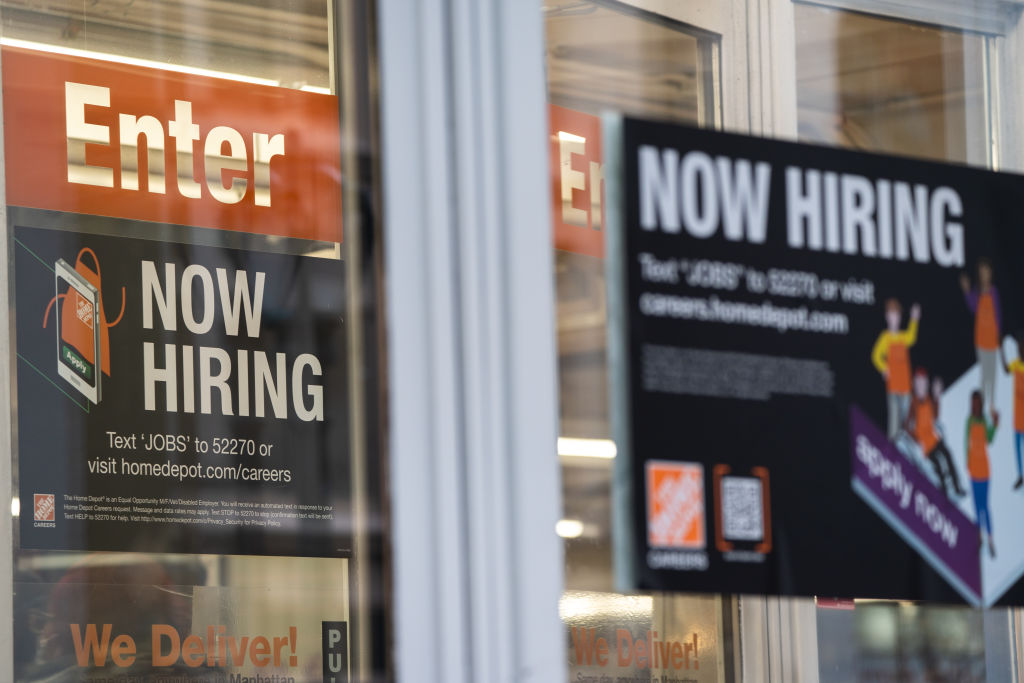
U.S. hiring boomed in February while wage growth slowed, showing a strong labor market that likely keeps the Federal Reserve on track to raise interest rates this month while offering some respite from strong inflationary pressures.
Nonfarm payrolls increased 678,000 last month—the most since July—after upward revisions in the prior two months, a Labor Department report showed Friday. The advance was broad-based across sectors. The unemployment rate edged down to 3.8%, and average hourly earnings were little changed from the prior month.
The median estimate in a Bloomberg survey of economists called for a 423,000 advance in payrolls and for the unemployment rate to fall to 3.9%.
The employment report — the last the Fed will receive before its March 15-16 meeting — highlights a steadily improving, though extremely tight labor market. While declining Covid cases and looser restrictions likely helped boost hiring, employers are still scrambling to fill a near-record number of vacancies, making it tough to meet resilient demand by households and businesses alike.
Labor demand is likely to continue to exceed supply, limiting the pace of job growth and putting upward pressure on wages. Friday’s report showed average hourly earnings were little changed in February and up 5.1% from a year ago, a deceleration from the prior month. The average workweek ticked up to 34.7 hours.
Traders focused on the flat average hourly earnings figure, sending the yield on the 10-year Treasury note lower. S&P 500 futures remained lower.
Even though wage growth lagged expectations, strong hiring and the lower unemployment rate support the Fed’s plan to raise rates this month. Chair Jerome Powell reaffirmed that plan this week after Russia’s invasion of Ukraine, which has led to a surge in oil, metals and grain prices and clouded the U.S. economic outlook. He said he favors a 25 basis-point increase to kick off an expected series of hikes this year.
Participation Rate
The labor force participation rate—the share of the population that is working or looking for work—ticked up to 62.3%, and the rate for workers ages 25-54 rose to the highest since March 2020. While improved, a combination of factors like child care challenges, Covid-19 concerns and early retirements have whittled down America’s workforce. Before the pandemic, the overall rate was over a percentage point higher.
In testimony to lawmakers Wednesday, Powell noted the decline in labor force participation is “certainly something that’s now contributing to wage inflation and actual inflation and to the labor shortage that we’re currently seeing.” He also said the U.S. is “at least” at maximum employment, defined as the highest level that’s consistent with price stability.
Some of the sectors hit hardest by the pandemic saw strong job gains in February, including restaurants and health care. Professional and business services also advanced, while construction payrolls gained by the most since March.
— With assistance from Olivia Rockeman, Chris Middleton, Sophie Caronello and Liz Capo McCormick.
More Must-Reads From TIME
- The 100 Most Influential People of 2024
- The Revolution of Yulia Navalnaya
- 6 Compliments That Land Every Time
- Stop Looking for Your Forever Home
- If You're Dating Right Now , You're Brave: Column
- The AI That Could Heal a Divided Internet
- Fallout Is a Brilliant Model for the Future of Video Game Adaptations
- Want Weekly Recs on What to Watch, Read, and More? Sign Up for Worth Your Time
Contact us at letters@time.com